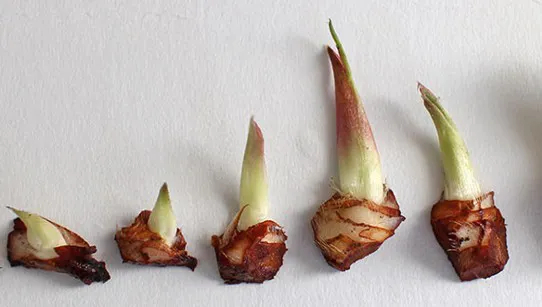Hearing Bert Meurs describe what he does in detail is like listening to the work of a plant surgeon. “That’s what I feel like sometimes,” he says. “Or maybe a dentist, but you certainly need to have very steady hands.” Bert and his company Plantalogica have specialized in flower mapping for over fifteen years. This concept for flower bud research is now widely accepted for soft fruits, especially strawberries, and various horticultural crops. However, recent developments mean that the experienced flower mapper still comes across new phenomena on a regular basis.

Dissection
Bert is not expecting his work to be taken over by technology any time soon. “You can make scans; that’s something I have even done myself. X-rays are an option or even MRIs. But the fact is that the structures are often stuck very closely together, with very little air in between, which makes it hard to look through them. It might be possible, but at an expense that is only an option for research purposes, not commercial. It’s still quickest to dissect the plant manually under the microscope, opening the small growth buds and seeing whether there is any flower development there.”
 Examining a bud under a microscope
Examining a bud under a microscope
Bert provides his flower mapping services to growers, propagators, breeders, and consultants. “They all want to know what a plant is made of.” Plantalogica is active in over twenty countries. “And we receive requests from even more, such as the United States, when people are looking to grow strawberries in indoor farms. They call asking how that works and whether I can map out the plant and count the flower trusses.”

Determining the growth strategy
The knowledge from the research, which is destructive by nature and requires the submission of a number of plants from a batch, tells growers what they are buying. “For instance, research may show whether the plants have two or four strawberry trusses. This plant knowledge helps growers determine their growth strategy.”
Depending on who’s asking for his services, Bert has seen that requests are aimed at specific areas. Breeders often wish to know how early or late a variety will come into production and what the differences are between varieties. Propagators are more interested in the results of flower mapping, the state of development, and whether the plants need any adjustments. “Such as covering the strawberries when the temperatures in autumn become too low,” Bert explains. “That would result in too few trusses while covering keeps them warmer and allows the plant to develop in a better way.”
 Strawberry buds
Strawberry buds
Everbearers
Another recent development has been strawberry growers looking at everbearing varieties. Bert has seen the number of related requests increase, too. “When growers do new things, I get new questions.” Plantalogica participated in a Swedish research project into strawberries and the dynamics of truss development in everbearers. The trick is to find a proper plant balance. “As a grower, you don’t want to over-exert the plant by keeping too many trusses. Placing too much of a burden on a plant may lead to a much smaller flush next time round.”
 LED lighting is another relatively new development in strawberry growing, and flower mapping can help in this regard too.
LED lighting is another relatively new development in strawberry growing, and flower mapping can help in this regard too.
According to the flower bud specialist, people in the Netherlands are fairly well-aware of his specialism, but not so much abroad. “They are sometimes genuinely surprised about the possibilities and the fact that they don’t have to wait and see what a plant will do. Flower mapping allows growers to know this in advance and enjoy a much better night’s sleep.”
 Strawberry flowers
Strawberry flowers
For more information:
Bert Meurs
Plantalogica BV
Droevendaalsesteeg 1, 6708 PB
Wageningen, the Netherlands
Tel.: +31 615 47 86 14
bert.meurs@wur.nl
www.plantalogica.nl
